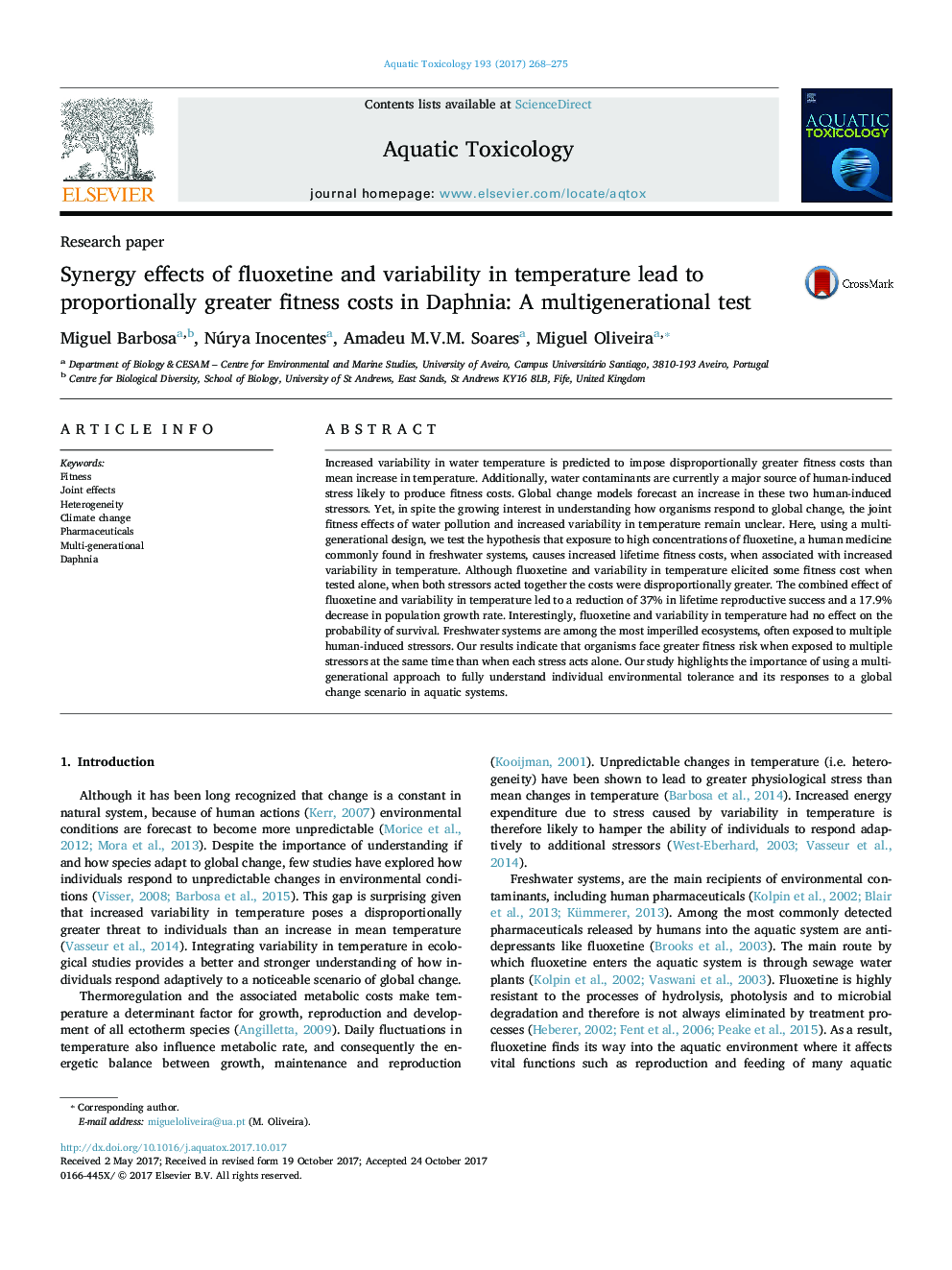| Article ID | Journal | Published Year | Pages | File Type |
|---|---|---|---|---|
| 8883959 | Aquatic Toxicology | 2017 | 8 Pages |
Abstract
Increased variability in water temperature is predicted to impose disproportionally greater fitness costs than mean increase in temperature. Additionally, water contaminants are currently a major source of human-induced stress likely to produce fitness costs. Global change models forecast an increase in these two human-induced stressors. Yet, in spite the growing interest in understanding how organisms respond to global change, the joint fitness effects of water pollution and increased variability in temperature remain unclear. Here, using a multigenerational design, we test the hypothesis that exposure to high concentrations of fluoxetine, a human medicine commonly found in freshwater systems, causes increased lifetime fitness costs, when associated with increased variability in temperature. Although fluoxetine and variability in temperature elicited some fitness cost when tested alone, when both stressors acted together the costs were disproportionally greater. The combined effect of fluoxetine and variability in temperature led to a reduction of 37% in lifetime reproductive success and a 17.9% decrease in population growth rate. Interestingly, fluoxetine and variability in temperature had no effect on the probability of survival. Freshwater systems are among the most imperilled ecosystems, often exposed to multiple human-induced stressors. Our results indicate that organisms face greater fitness risk when exposed to multiple stressors at the same time than when each stress acts alone. Our study highlights the importance of using a multi-generational approach to fully understand individual environmental tolerance and its responses to a global change scenario in aquatic systems.
Related Topics
Life Sciences
Agricultural and Biological Sciences
Aquatic Science
Authors
Miguel Barbosa, Núrya Inocentes, Amadeu M.V.M. Soares, Miguel Oliveira,
